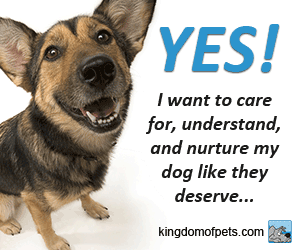House training your dog can be very difficult when first bringing home your new friend, but that is only true if you do not have a consistent routine. This article will show you how to properly establish a routine that you and your new dog can easily follow.
When corrected your dog verbally, make sure to use sharp, concise wording. Don't rant on and on about how bad your dog is. Just tell them no, and point them in the desired direction. Do not scream, but rather use a loud and firm voice so they understand that you are serious.
Your dog needs to get plenty of exercise. Boredom often befalls an inactive dog, or he may find himself in a "mutt rut" with a dull and listless routine. Bored dogs are difficult to train. When your dog is happy and well-exercised, he will be more willing to pay attention to his training. It is a great idea to take your dog out on runs or walks through the neighborhood.
Always be kind and patient with your dog. Understand that training dogs can be frustrating since some dogs have a more difficult time learning obedience than others. Always try not to lose your temper and resist the urge to scream or shout at your dog. Also, never hit your dog as this will only serve to confuse it and will actually make training more difficult.
Housebreaking a dog takes time. The key is to be consistent when teaching him where it's not acceptable for him to relieve himself and consistent in the message that you send as to where you expect him to go. This may be on a pad inside the house, on a lead when you take him outside or running free in a fenced yard.
When you are first starting out in training your dog, try to schedule the training sessions to take place at about the same time every day. If you are making the training sessions a positive experience and doing them on a schedule, your dog will start to look forward to the sessions and enjoy them more.
You should pick a phrase to say to your puppy while he is being house trained. Every time you take him outside, tell him "go potty," (use whatever phrase you have chosen) and this will help him learn to focus and remember what he has gone outside to do.
When you get a new puppy, the best way to train it is to remove the temptation to behave badly in the first place. For example, if you have a puppy that is inclined to chew on shoes, store all of the shoes in the house out of reach of the dog. This way, the behavior doesn't have to be trained out of the dog later.
If you have a dog that begs, the easiest way to train them from this behavior might be to simply remove the dog from the situation. Shutting the dog out of the room at mealtimes keeps them from pestering you while you eat, and removes the temptation for you to give in to that cute face.
Dogs much like people all have their own personality. Some dogs can just be more difficult to train than others for whatever reason. If someone has a dog like this that is not responding to training or otherwise acting difficult sometimes the right choice is to seek a professional dog trainer for help and information.
Train your dog so that living together is fun for both you and your dog. Living with a dog should not be a hardship, but it can be if you don't take the time to research the type of training a dog understands. A dog does not think like a human, so learning how to train in a way they understand will make it easier for both of you.
A great dog training tip is to assume the role of the pack leader. All dogs have a pack mentality. There is typically a pack leader that influences the behavior of the rest of the pack. By acting as the pack leader, your dog will become more obedient.
Food is one of the best positive reinforcement tools available to the owner in the dog training process. Feeding a dog after it has behaved acceptably is a powerful message that any dog will understand. Of course, dogs should not be starved! But associating feeding time with success will encourage a dog to work harder to live up to its owner's expectations.
As mentioned in the beginning of this article, it is very important to get your new dog to understand what should and should not be done inside your house. If you set a routine and be consistent in your training methods, this will lead to a greater understanding from your dog as to what is the proper way to behave.

